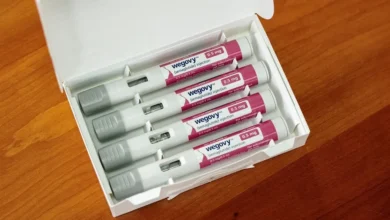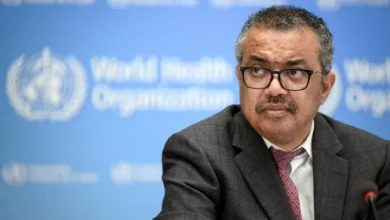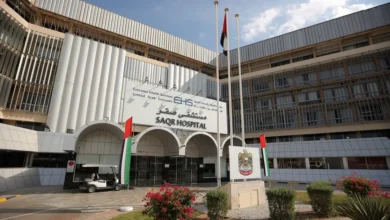‘Growing pains’ or something more? Doctors warn parents of rising juvenile arthritis

Health specialists are urging parents to pay closer attention to limping, stiffness and “slow mornings” in children, warning that juvenile arthritis is on the rise.
Juvenile idiopathic arthritis (JIA) is the most common chronic rheumatic disease in children. It affects roughly 1 in 1,000 children globally.
Saudi Arabia’s Ministry of Health has reported steady increases in pediatric rheumatology referrals over the past decade while UAE health data show musculoskeletal conditions are among the top five causes of chronic childhood disability.
Now, experts say early detection and early movement can prevent disability and protect joint health into adulthood.
Early signs parents often overlook
Dr. Deepak Mullaserry, senior physiotherapist at Medcare Physio and Rehab Centre in Dubai, told Al Arabiya English that the earliest signs are not always painful.
“From a physiotherapy standpoint, I tell parents to watch less for ‘pain complaints’ and more for subtle changes in how their child moves,” he said.
He pointed to morning stiffness, limping that improves later in the day, avoiding running or stairs, and joints that appear warm or swollen. Some children begin asking to be carried more often or drop out of play earlier than peers.
Mullaserry warned that “any persistent pattern of stiffness, limping, or movement avoidance” that lasts for more than a few weeks should prompt a pediatric and rheumatology or physiotherapy assessment, “rather than being dismissed as ‘growing pains.’”
Movement therapy as a core part of treatment
Although parents often assume rest is safe, controlled movement is essential for managing inflammation.
“For juvenile arthritis, movement is part of the treatment – not the opposite of rest, but a structured, therapeutic dose of movement,” Mullaserry said.
He explained that gentle activity helps lubricate joints, reduce stiffness, strengthen muscles and improve circulation.
During flare-ups, therapy focuses on mobility and pain relief.
During calmer periods, children progress to strengthening, balance training and functional play “in close coordination with the rheumatologist.”
Physiotherapy also counters secondary complications common in the Gulf, where children spend long hours in school or on screens.
A national report by the Kingdom’s General Authority for Statistics (GASTAT) found that only 18.7 percent of children and adolescents aged 5-17 years in Saudi Arabia engage in at least 60 minutes of physical activity daily.
Meanwhile, a study by the University of Sharjah and American University of Beirut published in June 2025 found that 37.7 percent of children aged 4-17 in the UAE spent more than 7 hours per weekday on screens (outside of lessons). Among those children, 68.8 percent did not engage in any physical activity.
The sedentary lifestyle can worsen tightness, deconditioning and morning stiffness.
Why early therapy changes long-term outcomes
Experts stress that early intervention significantly improves a child’s future mobility and independence.
Mullaserry said early therapy helps prevent lasting deformities, maintain age-appropriate motor skills and protect bone and muscle health.
“Early physiotherapy is not just about today’s pain – it is about preserving the child’s future joint health, independence, and quality of life into adolescence and adulthood,” he said.
Children who learn early self-management strategies are also more likely to stay active in school and participate safely in sports – an important factor in active Gulf communities.
Taking part in activities such as swimming, cycling and supervised low-impact activity can all be effective methods to improve mobility.
Osteopathy gaining ground
While physiotherapy forms the core of movement therapy, osteopathy is becoming an important complementary tool in the Gulf region for managing juvenile arthritis.
Osteopathy is a hands-on, manual therapy that focuses on how the body’s joints, muscles, and connective tissues move and work together.
Unlike physiotherapy, which relies heavily on strengthening and exercise-based rehabilitation, osteopathy uses gentle touch, guided positioning, and subtle techniques to ease tension, improve mobility, and support the body’s natural ability to regulate inflammation.
Dr. Mathilde Valade, an osteopathy doctor at Wellth, said her role is to enhance comfort without replacing medical care.
“Osteopathy plays a complementary role within the broader medical team,” she told Al Arabiya English.
“I see my role as a facilitator: I don’t replace medical treatment, but I help optimize the child’s comfort and function.”
Valade uses indirect methods, cranial osteopathy, soft tissue work and, when appropriate, lymphatic techniques to help reduce compensations and calm overactive tissues.
“The goal is never to force movement but to work with the body’s natural capacity to adapt and self-regulate,” she said.
Simple adjustments
Valade said that posture issues, disrupted sleep, and emotional stress can all intensify symptoms.
“In my experience, these factors play a significant role,” she said.
She encourages families to make simple daily adjustments – such as anti-inflammatory foods, gentle movement, proper backpack use, reduced screen time, and calming bedtime routines – to help children tolerate flare-ups more comfortably.










